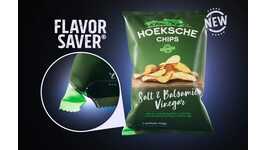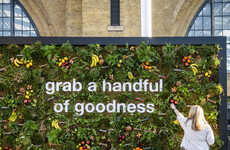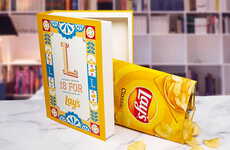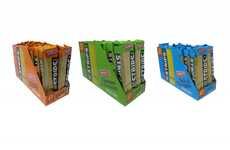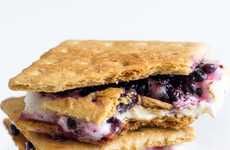
Cornell University Food and Brand Lab Issue Edible Stop Signs
Vivian Lau — May 22, 2012 — Unique
References: news.cornell.edu & fastcoexist
Sometimes the only cue people get to stop eating is an awful feeling, telling you your stomach is unforgivingly angry and is threatening to bloat for hours -- but fear not, your friendly neighborhood edible stop signs are sure to slow you down and save the day.
Cornell University Food and Brand Lab researchers experiment with red-dyed Lays Stackables potato chips dispersed at regular intervals to act as subconscious stop signs. The intervals between chips are meant to represent a single serving size. Results of the study done using college students, who are notoriously guilty of late-night snacking, show that people in the 'edible stop sign' group were better able to judge how many chips they had eaten (within one chip!) versus the group with no colored cues. They also ate 50% less chips than the group without visual markers.
In a society where obesity is becoming a bigger and bigger problem -- literally -- these edible stop signs have the potential to put the brakes on this health epidemic.
Cornell University Food and Brand Lab researchers experiment with red-dyed Lays Stackables potato chips dispersed at regular intervals to act as subconscious stop signs. The intervals between chips are meant to represent a single serving size. Results of the study done using college students, who are notoriously guilty of late-night snacking, show that people in the 'edible stop sign' group were better able to judge how many chips they had eaten (within one chip!) versus the group with no colored cues. They also ate 50% less chips than the group without visual markers.
In a society where obesity is becoming a bigger and bigger problem -- literally -- these edible stop signs have the potential to put the brakes on this health epidemic.
Trend Themes
1. Color-coded Portion Control - Using colored cues to indicate portion sizes can help individuals better regulate their food intake.
2. Subconscious Stop Signs - Edible markers placed at regular intervals can serve as visual cues to prompt individuals to stop eating.
3. Reduced Snacking - The use of edible stop signs has been shown to significantly decrease the amount of snacks consumed.
Industry Implications
1. Food and Beverage - Companies in the food and beverage industry can capitalize on the trend by developing products with portion-control cues.
2. Healthy Lifestyle - The fitness and wellness industry can adopt edible stop signs as a disruptive innovation to assist individuals in managing their food intake.
3. Nutrition Education - The education industry can incorporate the use of colored cues in nutritional programs to teach individuals about portion control and mindful eating.
0.5
Score
Popularity
Activity
Freshness


